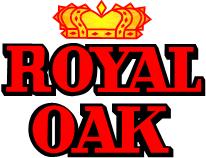 Dark Ages Re-Creation Company
Dark Ages Re-Creation Company

This section of the site will showcase the experimental smelts we have made. These expeiments are based on archaeological evidence, and are targetted to recreate the techniques the Viking Era Norse used to smelt iron. Our lead experimenter has also done a number of smelts outside of his work with DARC. To view his records of the various smelts including some more complete roll-up information please visit his page here. To jump directly to our smelts please use the menu on the left.
We get a number of emails asking why we make some of the choices that we do in our experiments. This can best be explained by providing a background on what we are doing and why. This section of our website records a sequence of experiments designed to bring us eventually to an understanding of at least one method the Viking-era Norse could have used to produce iron. There is, of course, no way for us to prove that the method we eventually produce was used. Our goal is to get a method that first reliably produces iron, and second uses equipment that would have been available and, third that matches the archaeological record that we have with regards to blooms produced, smelter and surrounding area layout, and materials.
Our research shows that there are at least three main types of smelters that would have been used. Rock slabs, some with clay/ceramic on them, have been found in a smelting context. This may indicate that the smelter was made of rock, or that it was surrounded by these slabs of rock. Similarly there are cobb (clay / sand / straw mixes) remains of what are likely smelters. Finally there are the remains of sod smelters from Iceland. Within these physical types, there can further be a range of sizes - diameter normally being all that can be ascertained from the remains.
At these sites we find charcoal remains, and slag (the left over bits that come from making iron), some iron ore, and - extremely rarely - an actual iron bloom.
We are coming to understand the physical relationship between ore, furnace, and charcoal. For any given ore body, there will be a best possible ore particle size, charcoal fuel size, and furnace design. The layout of the furnace is further effected by the nature of the material used to construct it. Air volume drives the complex chemistry and the physical environment inside the smelter. Unfortunately, no actual air delivery system survives from the dark ages, but the layout of the furnaces indicates some kind of forced air bellows system must have been used.
Extrapolating from blacksmith's work this implies that they used a bellows powered forced-air & charcoal system to turn the ore into iron.
Our first sequence of experiments were designed to test various bits of equipment while getting us to a point that we could reliably make iron. Once we obtained iron on a regular basis it was easier to adjust a variable in a smelt and understand how each might effect the overall progress and end result.
We often get teased about our use of mechanical blowers rather than bellows (although we have used various bellows systems many times). Air delivery remains the biggest question surrounding the actual Viking Age methods. Using a mechanical blower allows us to fix the amount of air moving into the smelter without having to worry about operator fatigue, different operators producing different levels of air, the changeover between operators causing a cooling, and so on. We have experienced all of these problems from time to time when we used bellows. Currently we are looking at trying to rigidly control the air flow to allow us to sort out some other variables. We will eventually return to the bellows before we complete the series. It is worth mentioning that this sort of experiment is often more difficult than people realize, often in very subtle ways. The bellows is a good example of that. To begin with there are no surviving examples of norse bellows. This means that before we can use them we need to figure out what they looked like. There are, thankfully, a couple of carvings of bellows, although these re blacksmith's, not iron smelting, equipment. Both are very simplistic but it is possible to see that they were using a two lobed bellows like you will see in our pages. They do not, however, come with good measurements. Since the size of the bellows directly affects the amount of air produced this is an important question. Many tiny things about a bellows (hinge method, height off ground, total lift on the lobe, size of air input, size of air output) can all impact the pressure and amount of air delivered to the smelt. If you don't know how much air is needed how can you make the bellows to produce that air?
We originally began with this list of variables (list will be added soon). Now thanks in part to our own work, and in part to that of many other experimentors we are confident that we can step out and make iron whenever we want. The next step is to modify that process to bring it in line with the known archaeological evidence. It is important to note that in many cases other experimenters have worked on these same problems. It is important for our understanding of the iron smelting process to often duplicate other's results to build our own direct experience.
In 2008 that will likely involve the following experiments. Two main variables will be examined: ore types and air delivery.
If you have any questions about our smelting
experiments please email us.
 We would like to
express our thanks to Royal Oak who has assisted us in these
experiments with their generous donations of charcoal.
We would like to
express our thanks to Royal Oak who has assisted us in these
experiments with their generous donations of charcoal.
 |
Reports of all of our iron smelting efforts along with more articles and information are available on the "Iron Smelting in the Viking Age" CD from the Wareham Forge. Copies of the CD can be purchased here. |